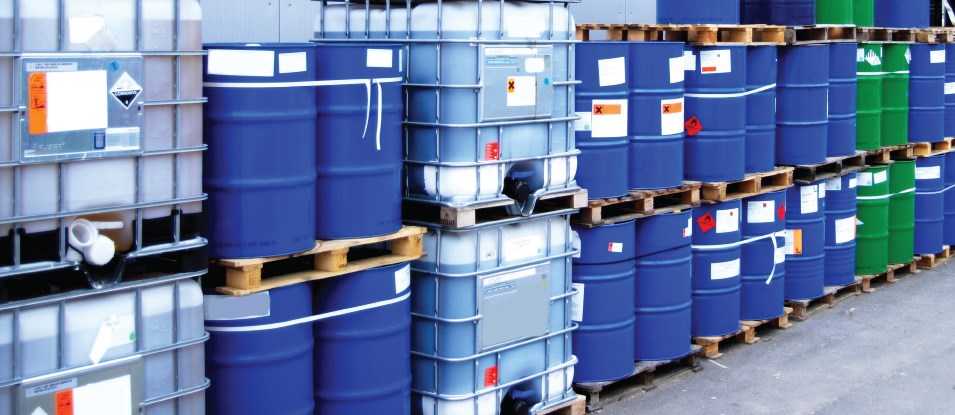Chemical warehousing is the process of storing chemicals and other hazardous materials.
The term chemical warehousing refers to an industry that stores and transports large quantities of chemicals. These products are typically shipped in barrels, tanks, or drums. While the practice has evolved over the years, today’s warehouses typically store and transport a range of products.
These may include petroleum products (such as gasoline, diesel, and oil) as well as chemicals like propane and ammonia. Any substance that is used commercially may end up in a warehouse facility.
When it comes to storing chemicals, it is important to take into account the specific properties of each material. For example, you will need to store materials that are flammable in a designated area that is away from the ignition sources. You will also need to make sure that you have the proper safety equipment and training in place to handle these materials safely.
While the term chemical warehousing may be new to many, the need for these storage and transportation facilities has grown over the last decade. The demand comes as a result of several trends which includes a shift toward outsourcing.
There is also a growing need to store and transport large quantities of products at once, through the reduction in the size of tank trucks.
The rise of chemical warehousing
When storing hazardous materials, it is important to follow specific safety precautions to prevent accidents and injuries.
Here are a few tips to keep in mind:
Store chemicals in a cool, dry place away from direct sunlight and heat sources
Label containers clearly to identify the contents
Never mix different chemicals
Always wear safety goggles, gloves, and other protective gear when handling chemicals
Never smoke or eat near chemicals
Many businesses have entrusted inventory supply to professionals like 3PL (Third-Party Logistics) providers who are highly experienced in chemical and hazardous material operations. Chemical warehousing and storage service providers offer warehousing, distribution, transportation, and inventory management services.
Despite rising demand, building and owning warehouse space to store and transfer chemicals has its own set of challenges. These include the need to find space that is close to rail lines and trucking routes. Locations also need to meet regulations from the Environmental Protection Agency (EPA) and the Occupational Safety and Health Administration (OSHA), implying that the sites must have the necessary safety measures in place including fire protection systems. Constructing and maintaining these warehouses takes time and money, especially when located in multiple geographic areas.
The chemical warehousing and storage market is estimated to grow at a CAGR of 3.88% between 2022 and 2027. This will be driven by the growth in tank wagon trading, as well as the need to store and transfer larger quantities of chemicals in and out of the country. However, this growth could be hampered if the market fails to overcome the vector of delivery (VD) challenge.
The good news is that modern technology can help warehouses achieve greater efficiency and cost savings. Modern warehouses are fully automated and use racking systems to maximize storage space. These systems can deliver and receive containers within minutes, allowing greater flexibility in the movement of chemicals and also a faster and more efficient transfer. However, even with these advancements, the standard process still involves contacting another warehouse to arrange a transfer, which might need a transit period of two to five days, depending on the location.
It is vital to find a chemical warehouse that offers proper storage and has a
well-trained staff. You may also think of considering cross-docking, picking, packing, and transport. Make sure only specified forklifts are used in the warehouse and that it is approved by the necessary organizations. For worker safety, the warehouse should have the right PPE or hazmat suits. Be sure to have control measures like fire extinguishers, a sprinkler system, first aid supplies, emergency contacts, an eyewash station and shower, and other clean-up supplies on hand.
Regular risk assessments are crucial for making sure all safety requirements are met, such as safe storage with no leaking or deteriorating containers, unblocked and shut doors, proper disposal of trash, and illuminated aisles and walkways with the correct warning signs in areas where needed.
The increased demand from various end-user industries like packaging, transportation, plastics, and healthcare is predicted to stimulate the expansion of the sector. The growth of this segment is primarily attributed to the increasing adoption of chemical warehousing and storage, which is driven by an increase in the global demand for chemical warehousing and storage.
As per the industry report, The global chemical warehousing market was valued at US$ 15.3 Bn in 2021. It is estimated to grow at a CAGR of 3.8% from 2022 to 2031 and is expected to reach US$ 22.1 Bn by the end of 2031.
At Allcargo Logistics, we specialize in providing efficient chemical warehousing solutions for businesses tailored to your requirements with the highest level of security. So, if you are looking forward to partnering with a safe warehouse logistics provider for your business, reach out to us.






